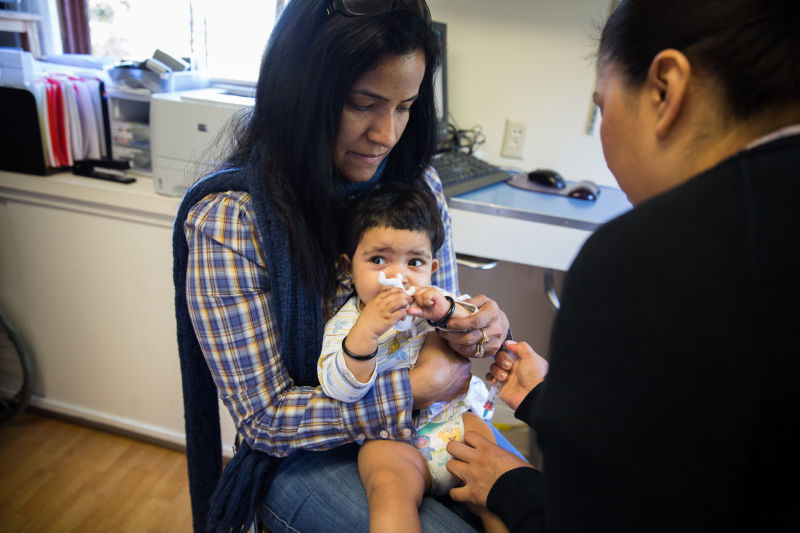Individual schools had major improvement, like Thornhill Elementary School in Oakland's Montclair district, which saw its up-to-date vaccination rate skyrocket from 14 percent last year to 96 percent this year.
“We doubled down on this issue, and we're glad to see our efforts are paying off, because what it's really about is the health of all of our children,” said Oakland Unified School District spokesman Isaac Kos-Read.
Even though it’s an issue that gets a lot of attention in the media, the number of parents choosing not to vaccinate their children due to personal beliefs was actually not a major phenomenon in Alameda. Only 1.5 percent of kindergartners in the county had such exemptions in 2014-2015 and it fell to 1 percent this year.
All children are required to be vaccinated against a range of diseases in order to attend school -- unless they have filed a "personal belief exemption" or a medical exemption with their school.
Last summer, California Gov. Jerry Brown signed a law abolishing the personal belief exemption. The law takes effect in July, and in the next school year all students must be vaccinated unless they have a medical exemption.
Alameda County's major challenge was students with incomplete vaccination records who were allowed “conditional entry” to school. The rate of such admissions was 9.7 percent last year, and this year it has plummeted to 2 percent.
In Oakland, conditional entrants represented 25 percent of kindergartners last year, and that dropped to about 2 percent, Pine said.
The high rate of conditional entrants at some schools was in part because those exemptions were used inappropriately, she said. Some school personnel interpreted “conditional entry” to mean that students were allowed to enter school as long as their parents promised to get them the shots in the future.
But conditional entry is meant for kids who were recently vaccinated and aren’t due for the next shot in the series yet or those who have a temporary medical exemption.
Fixing the problem
Schools with low vaccination rates aren’t necessarily filled with unvaccinated children, Pine said. It’s often due to poor record keeping and administrative challenges.
School support staffers struggle to enter complete vaccination records because of turnover, lack of training and inadequate time to enter the data or follow up with parents, she said.
Also, schools have been reluctant to turn away kids just because they don’t have complete vaccinations. There was a financial disincentive to exclude children as schools get funding based on attendance, but the state has taken steps to change that, Pine said.
Schools with problematic vaccination rates in 2014-2015 received a letter saying they would be audited if their Fall 2015 rates didn’t improve, she said.
To help boost vaccination rates, Pine said, the county department ranked schools on a “community immunity” honor society based on their vaccination rates and sent the listing to school personnel. She said seeing the information displayed like that encouraged officials from schools that were ranked low to ask the county health department how they could turn that around.
The county health department worked with schools to train staff, she said. A measles outbreak tied to Disneyland, which was first reported last January, helped to boost public awareness about the importance of vaccines, encouraging parents and schools to put a priority on immunizations, Pine said.
“Schools really have to give protected and focused time to staff to do it, where they won’t be interrupted,” Pine said.
It’s challenging for front desk staff to enter data when students and parents are constantly coming up to them and signing in and out of school.
“Much of what we needed was in the records,” said Thornhill Elementary School’s secretary, Sheila Smith. “It wasn't a matter of obtaining it. It was a matter of finding the time.”
She said entering immunization data is complicated for school staff because not all medical records look alike and the office environment is constantly distracting.
She said she asked for some dedicated time to work on the project and used personal hours as well, she said.
The principal, Steven Daubenspeck, said when he learned the school’s rate was so low last year, he began holding weekly meetings to check in with staff to increase accountability on vaccination record keeping. A lot of the information hadn’t been entered on time, he said.
“I was shocked,” he said. “I got the staff to really rally around, and focus on it. I do have immune-compromised kids here, and it's a life-and-death issue.”
